Top of the range deck fittings
The usual guard wires have been replaced by a rigid stainless rail, 75 cm (2’5”) high which is much safer than the current recommendations require, and the solid rail can also be used as a step. Access on board is either aft via the sugarscoops, or via a very well-designed pivoting lateral cut-away. The side decks are wide and ringed with handrails on the coachroof. Space is increased by a raised area which is not fitted out, but which houses lockers (watertight with carefully draining hatches) concealing the furling lines. Very flat, with a good non-slip surface and lacking in any trip hazards and line-ends, this design choice illustrates well the philosophy of the boat. It is streamlined with the installation of a proper blue-water anchoring station. A first locker gives access to the 1,500W windlass while a second reveals the chain lead as far as the pivoting bow roller. The general design of these vital elements for anchoring highlights that nothing has been forgotten. The attachment of the indispensable bridle is done here in perfect safety. This neat device also allows the Harken furler for the staysail and the big reacher to be clipped on. It’s also this which takes the strain from the anchor and not the forward beam. Its structure conceals the two furling lines.
The sail-handling station is at the heart of the X5: the two big Harken 60 electrical winches are powerful tools which can be used for everything. The solid frame of the windshield is used to support the removable bimini, which has articulated battens on mini bearing cars – a formidable solution which allows a perfect panoramic view to be maintained for maneuvering, combined with unrivalled all-weather protection.
Other clever ideas include a rain water catchment using the drains incorporated in the coachroof, as well as the 900W solar power station fitted in the roof, whose panel are adjustable in angle. The South African Sparcraft mast with only one set of spreaders has two diamonds stays, and lateral forces held by lower shrouds and capshrouds. The anodizing on the mast, and the way the hardware is secured to it such as some parts being welded, all indicate a remarkable build quality.
A refined interior
The majority of catamarans these days have a cockpit which serves as additional living space, a kind of multi-purpose balcony with many different uses forced upon it. The X5’s response to this a traditional one (bench seating around a large table, spacious lounger opposite and an adjustable bench seat aft), but this whole area can be quickly enclosed. In fact, the cloth screens are permanently fixed in the recesses in the arch, and it only takes a few seconds to set them in place! The bimini roof has a nice headlining and is well lit with LEDs, and this creates a great atmosphere in this outdoor saloon. A wet kitchen and a refrigerator perfectly complete the setup – you can heat things up (or cool them down) as necessary!
The galley is brilliant: set in an L-shape to port around a central island, it is a superb, well-finished installation, with some neat little touches. The lounger in the saloon is really comfortable, and is alongside the nav station, which is the nerve center of the boat, with everything accessed via an iPad on a stand. The quality of the woodwork is remarkable, as is the choice of domestic equipment and materials. Everything is a well-built, solid and entirely suitable for marine use. The limewashed oak trim comes from the well-known Dutch supplier Leewenburgh and is used over sandwich construction.
There is excellent light in the hulls, which have a pretty finish and plenty of storage. The utility room in the starboard hull is really designed for long-term used and the bathroom is quite simply perfect, with refined detail, comfort and quality. The two guest cabins to port offer are equally neat facilities, with really well-designed bathrooms. All the plumbing and cabling is run in separate galleries beneath the floor, and not in the bilges.
Real-time information
The cabling is fire resistant and the whole installation is insulated. All the sockets are US and European compatible, with the voltage being programmable. The whole of the Mastervolt charging and inverter system is run by an easyview controller, accessed along with the rest of the technical systems aboard, using the tablet supplied.
Access to all the main information about the boat is instantly available and can be saved at any moment by the yard’s design team for diagnostic purposes. The screen also displays reminders for maintenance.
A lively catamaran which is fun to sail
The amount of torque available from the 80hp Yanmars is very comforting, with three-bladed Maxprops really biting the water, giving great directional control for maneuvering on the dock at low revs. With no experience of handling the boat astern, I had no problem getting into our slip with 18 knots of wind on the beam. On the day of our test we enjoyed good winds, starting with 5 knots from the NE picking up to 18 knots from the NW for the majority of the day over a run of 32 miles. Once clear of the dock, I hoisted the mainsail from the helm station using the electrical winch.
Being totally unfamiliar with the boat, I asked Tamas Hamor to stay close by and keep an eye on me to make sure I didn’t foul anything up. 30 seconds of explanation was all that was required to have a good understanding of the deck layout which is exceptionally well-designed and built. Everything is led back to the cockpit through three tunnels, whose outlets have sacrificial polished stainless anti-chafe sections carefully installed. The 14 Spinlock clutches are generously-sized and are all ergonomically within reach.
Everything is clearly laid out, and each line (colors and characteristics carefully selected depending on their job) is identified on an engraved plate at the deck organizers. With of the cover stowed in 3 seconds, I had a perfect view as the main went up between the lazy jacks. Once it was set, I bore away and cut the motors. After a slight adjustment to the mainsheet car and a little bit in on the mainsheet, I unfurled the reacher. I checked the color of the line at the furler, released the clutch of the lazy sheet and pulled. Straight away had the feeling that I knew the boat and would be able to react immediately and make any adjustments with ease and dexterity.

The quality of the development of this hull number one is absolutely remarkable. The wind was backing, but then quickly settled in the NW and was picking up. With this amount of sail area (183m² – 1,970sq ft), the boat starts to move in just four knots of wind. The quality of the North membrane sails, combined with a faultless deck layout, made for a nice surprise at the start of our test. A good breeze was now blowing across the water, leading us to another exercise: I rolled up the reacher in a jiffy by bearing away and giving a bit of a lee from the main, easing the sheet with one hand and operating the furler with my foot. Fantastic doing this on your own compared to a gennaker!

The self-tacking staysail was quickly unfurled and once set for a close reach, I turned my attention to reducing the mainsail. With the traveler out and the sheet eased, the sail is empty, but it doesn’t flog. Thanks to the engravings for the lines, there is no confusion and I don’t need to ask Tamas a thing: ease the halyard, hook on the strap at the mast and re-tension, making a visual check (thanks to the hatch in the cover) that nothing has caught, and we’re off again! This magic deck layout gives me great confidence and I imagine it would be the same for any sailor. The feel of the helm is good for a hydraulic linkage, and checking the mechanical parts (welded stainless connections and rudder stock) inspired respect.
The X5 is agile for such a well-equipped model, it tacks perfectly, accelerates through a bit of a chop and knows how to keep up good average speeds between 8.5 and 10.5 (our maximum speed on the day) in 15-18 knots true. In the conditions we encountered I found it to be a very stable platform with a gentle passage through the water.



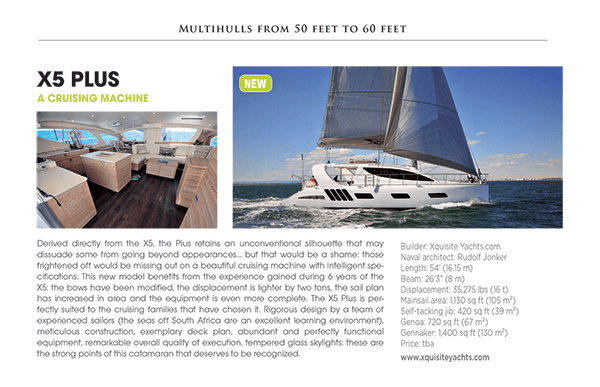
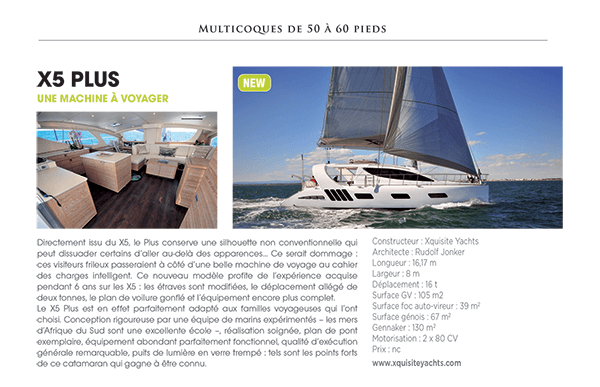

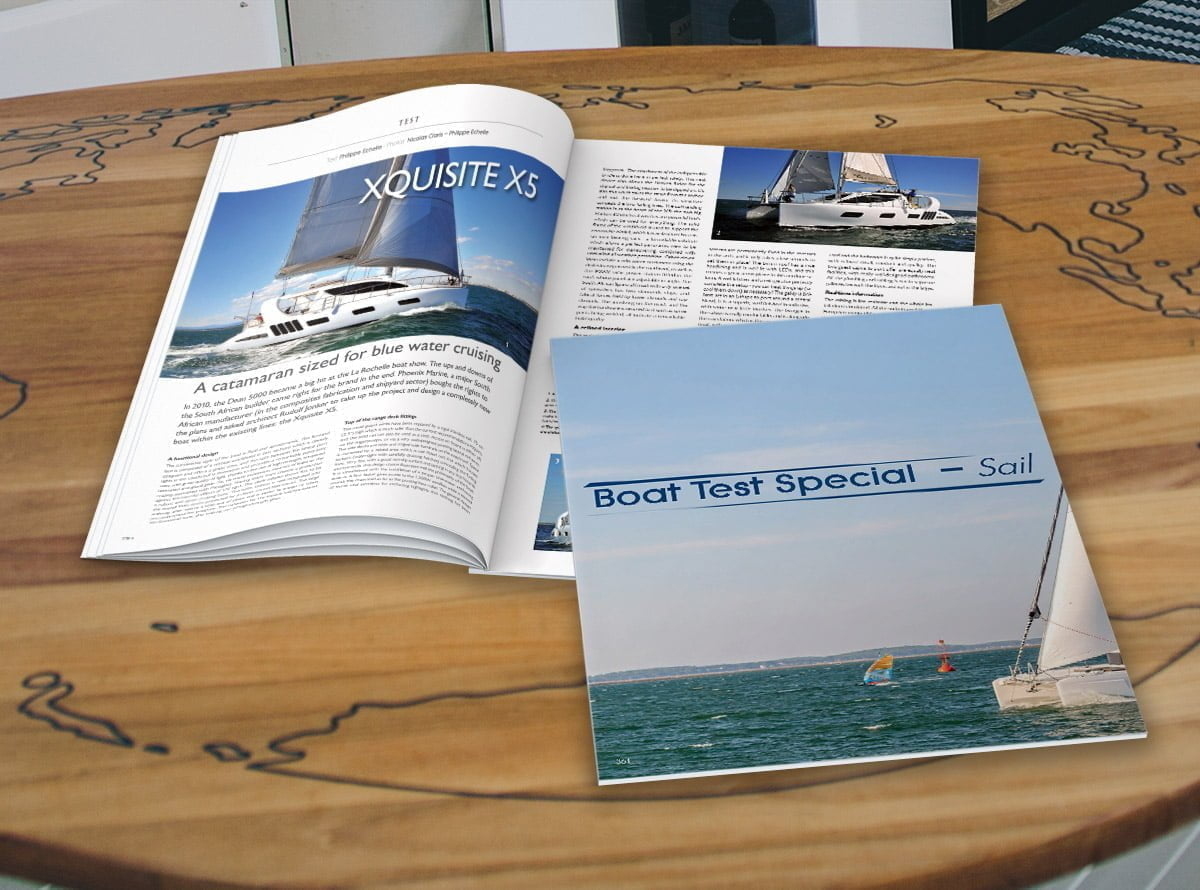
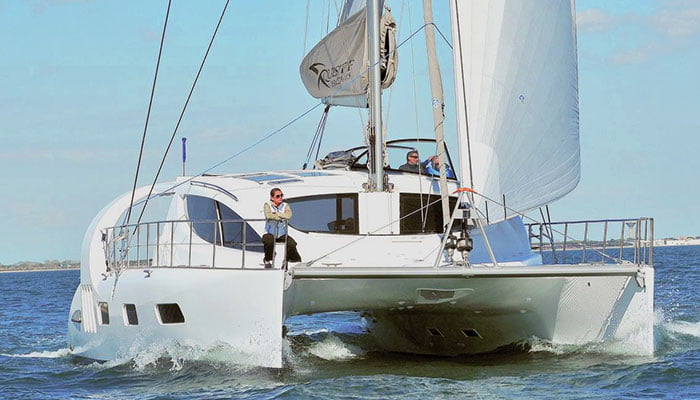

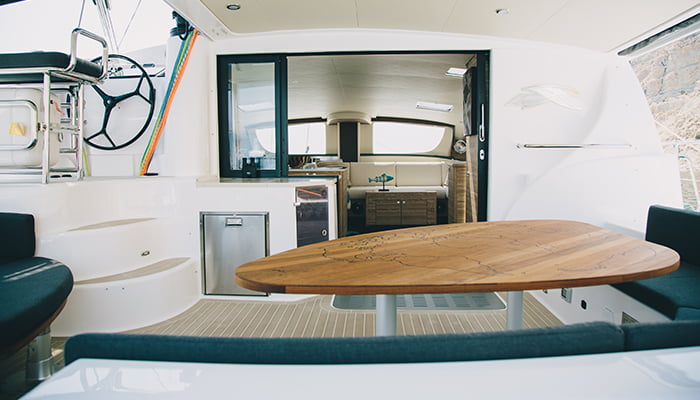





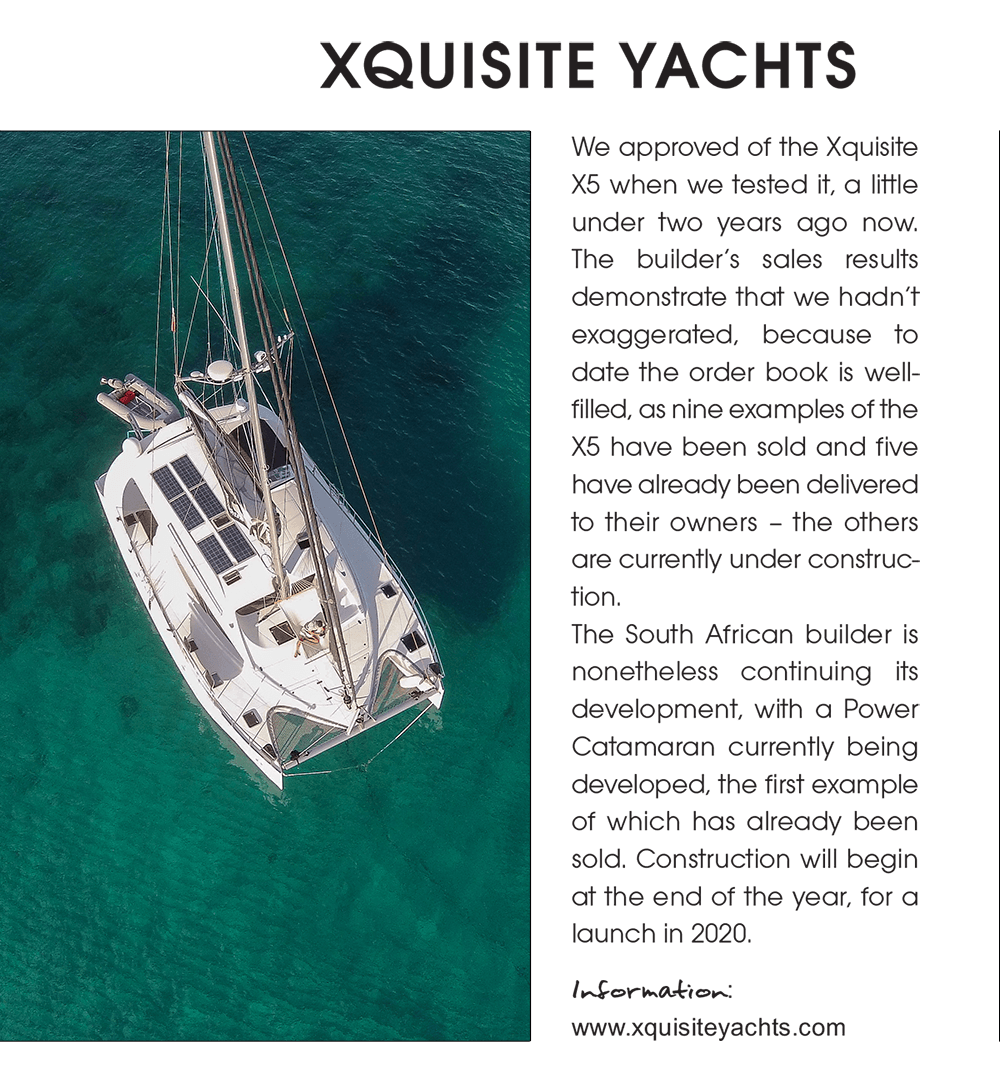
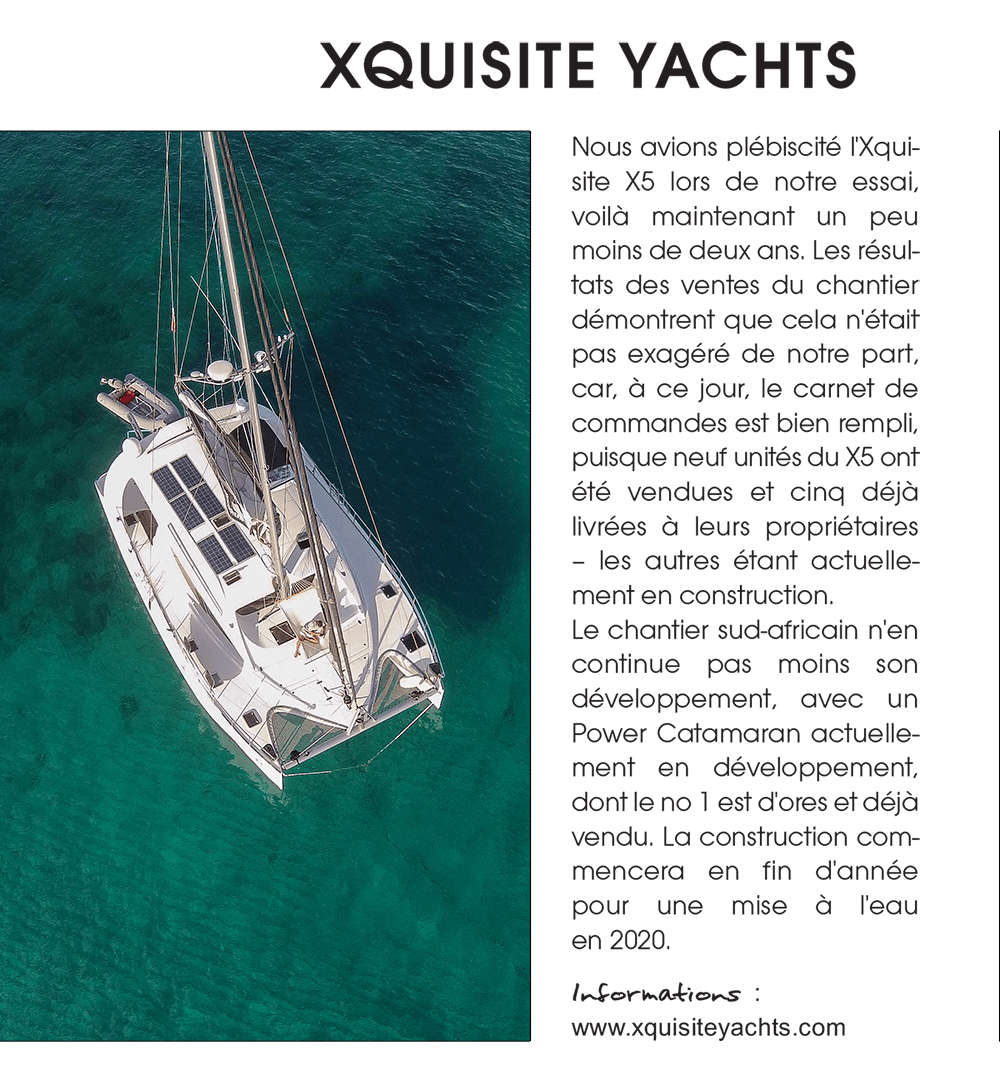

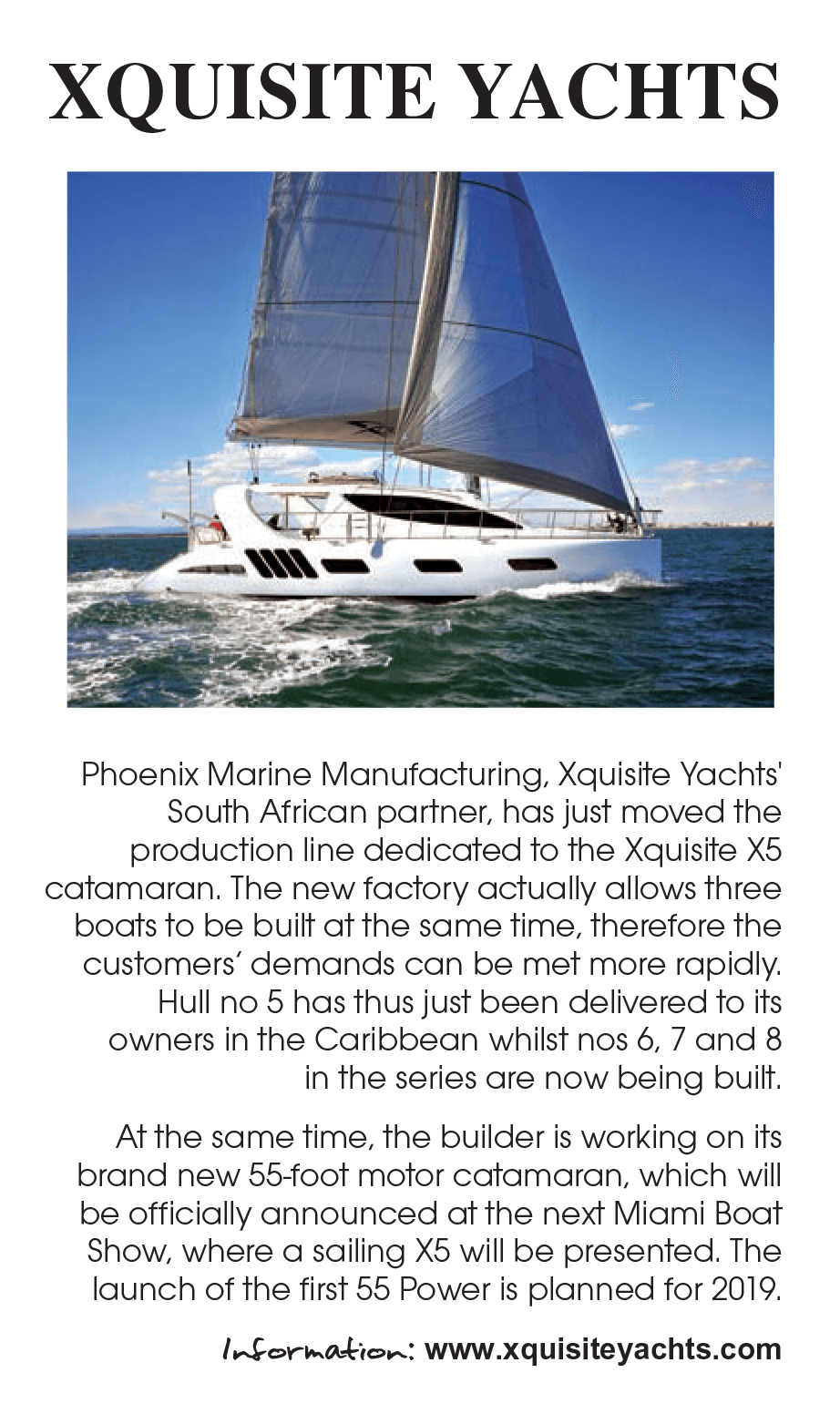
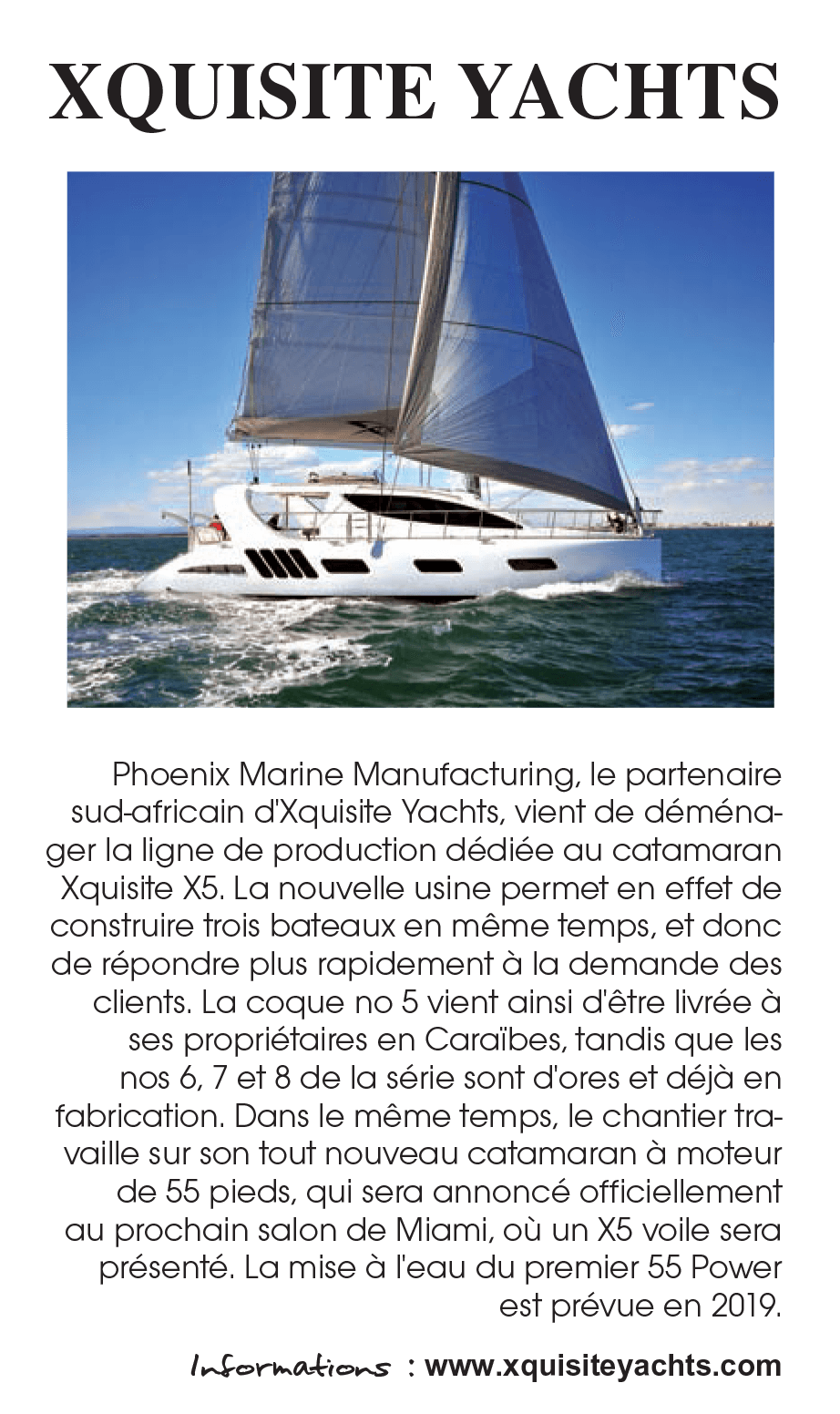



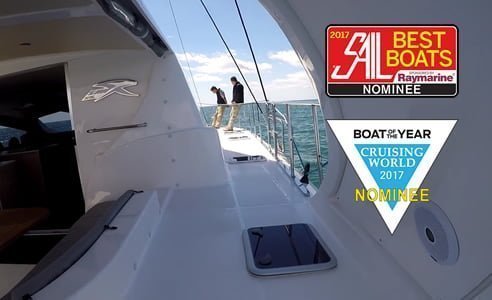 In 2010, the Dean 5000 became a big hit at the La Rochelle boat show, but then the actual launch of this model got bogged down with the various problems at the yard which eventually led to its demise.
In 2010, the Dean 5000 became a big hit at the La Rochelle boat show, but then the actual launch of this model got bogged down with the various problems at the yard which eventually led to its demise.